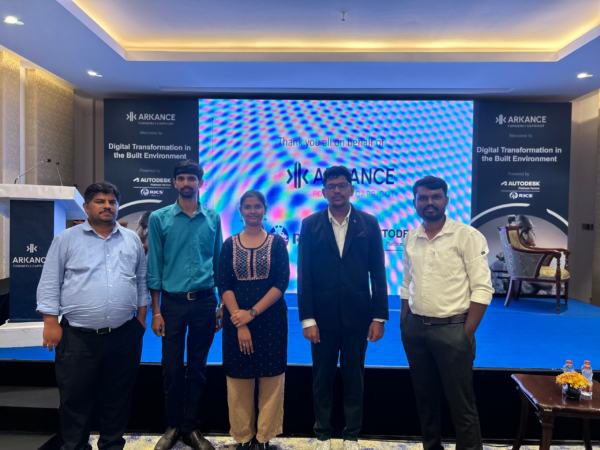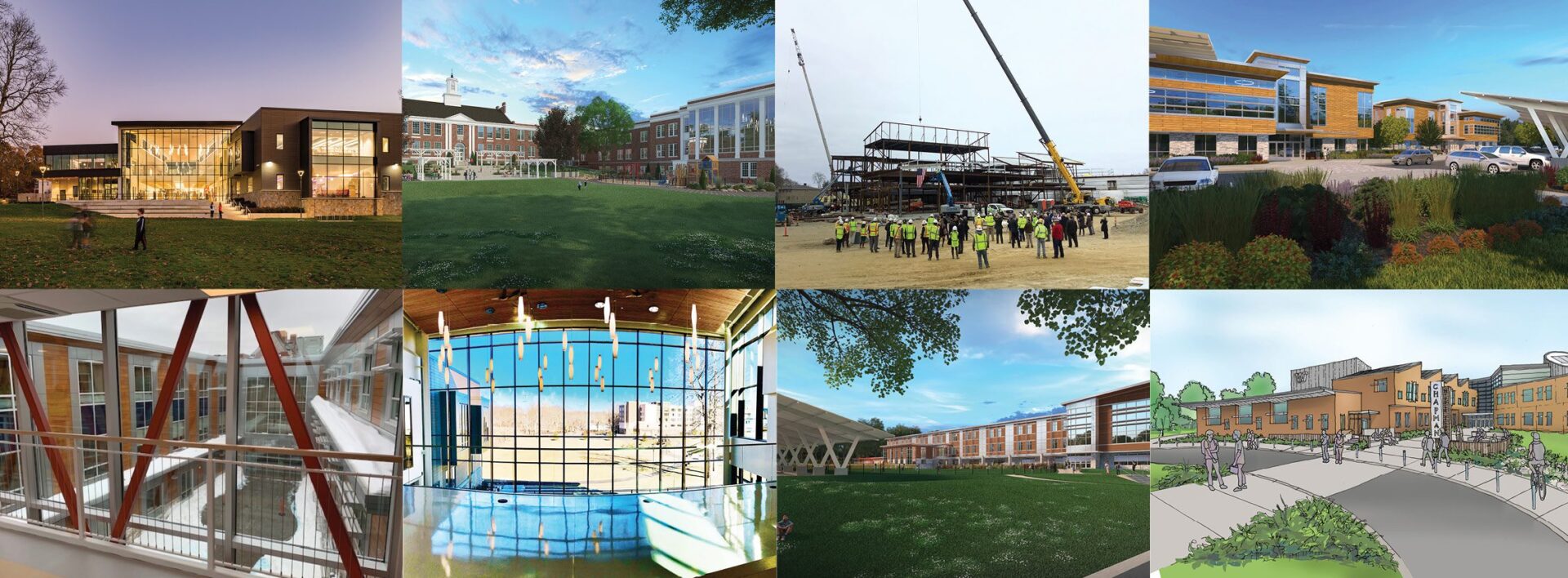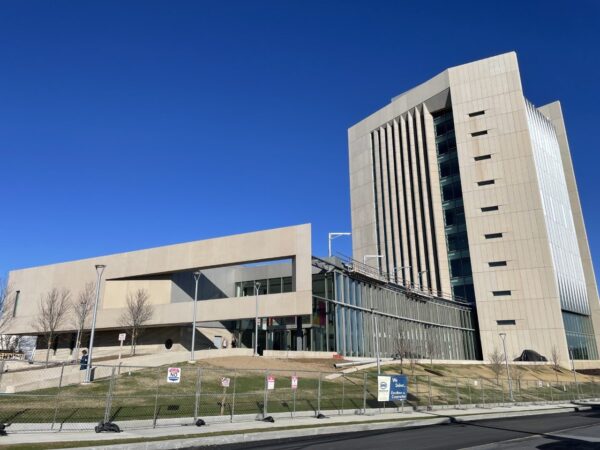
July 15, 2024 | Articles
Construction’s Digital Transformation & The Tools of Modern Project Management

Often, clients task project managers to help select the “best” construction delivery method for their specific construction project. Hill International, Inc. (Hill) has managed hundreds of projects in New England and across the U.S. and understands the advantages, risks, and opportunities of almost all construction delivery methods. In this article, we discuss the factors public procurement officials should consider when selecting a delivery method, the benefits of two common types of project delivery, and examples of how each method worked successfully.
In the case of the General Laws of the Commonwealth of Massachusetts, for vertical building construction for public clients, the public agency’s choice generally comes down to two options: Traditional competitive bidding by general contractors having been provided complete, detailed construction documents, or hiring a general contractor while the design is ongoing, based on qualifications, and competitive pricing of their general conditions and fee. The first is referred to as Design-Bid-Build (DBB), and the second as Construction-Manager-at-Risk (CMAR).
Every delivery method has its own characteristics and challenges and its own risks and opportunities. There is no “best” delivery method for a project, only the method that matches most closely with the client’s goals for the project.
Owner Considerations
To begin with, owners should ask themselves several, potentially tough, questions on a variety of topics when they are considering which delivery method is right for their project. Considerations for owners can include:
Budget: An accurate project budget is key to selecting the right delivery method. Risks to project costs, including funding risks, should be well-defined before choosing a delivery method. For example, if low cost is the most important factor in determining project success, then the delivery method and contract must address this goal.
Schedule: Like cost, the project timeline can be the most important criteria for project success or failure. A school project, for example, often must be completed in time to accommodate students and faculty for a new academic year. However, a new library or town hall may have more flexible schedule requirements. Funding sources, public demand, and other factors all influence the criticality of the project schedule. Owners should determine early during the project lifecycle the emphasis to place on meeting key milestones, from design completion to occupancy, and should then choose a delivery method that places this same level of emphasis on the project schedule.
Risk: Owners should have a clear understanding of the risks involved with their project, and then choose the delivery method that allocates those risks among the project participants best equipped to manage those specific risks. For example, some delivery methods offer owners greater cost certainty but do so by limiting the owner’s ability to make changes as the project proceeds. Others offer owners more control over the course of the project but present greater schedule and cost risks.
Owner Expertise: Some owners are comfortable being closely involved with their projects and making key decision in real time. Others are less familiar with the construction process and prefer to have an owner’s representative or other third party manage the day-to-day aspects of the project. Owners must be honest about their level of expertise, their available resources, and their desire to support the delivery method they choose.
Once owners have a grasp of the risks they are willing to accept and the opportunities they want to realize for their project, they can then make an informed decision on which delivery method suits their needs and constraints.
Design-Bid-Build
According to the Construction Management Association of America’s (CMAA) Owner’s Guide to Project Delivery Methods, DBB involves three sequential phases: design, when the design team prepares the plans for the project; bid, when the plans are presented to contractors for competitive pricing; and build, when the selected contractor executes construction.
Advantages
DBB is well understood throughout the A/E/C industry, with about 60% of all public vertical projects using the DBB method, according to CMAA. This may be because DBB offers several advantages for owners, such as:
Although very common, DBB is not a perfect delivery method and has several inherent risks. These include:
In Hill’s experience, DBB is the best choice for owners who are building a new building of relatively common variety, on a reasonable site, and have the time for the process of providing complete plans and estimates prior to hiring contractors to do the work.
DBB Case Study: Town of Watertown, Hosmer, Cunniff, and Lowell Elementary Schools
Hill is providing owner’s project management (OPM) services to the City of Watertown, MA, for the construction of the Hosmer and Cunniff Elementary Schools and for the extensive renovation of Lowell Elementary School. The Lowell project also includes an addition to the building. These projects will help Watertown address rising enrollment and provide more efficient, effective, and modern elementary school learning spaces.
The complex, multi-site, multi-phased project presents significant staging and logistical challenges, including protecting the educational experience for students, faculty, and staff during renovations at the occupied schools. The project entails the identification and provisioning of swing spaces, conducting operations on tight project sites, and coordinating site operations at three independent project sites to help ensure work proceeds as planned. The Hill team managed the design phase and helped both the design team and Watertown arrive at solutions aligned with cost, schedule, and community expectations. Hill is currently overseeing the construction phase and coordinating QA/QC and submittal reviews, processing invoices, and is monitoring contractor progress.
Despite the increasing use of CMAR delivery for these types of projects, largely due to their complexity, Watertown chose to use the DBB delivery method for these projects for several reasons. These include:
All three of the projects were contracted to builders after competitive bidding. All three came in under the established budget for construction cost. The new Cuniff School was completed on time and is occupied. The new Lowell School had their ribbon cutting in February of 2022, and the Hosmer School recently bid and came in under budget.
CMAR
When using the CMAR delivery method, a Construction Manager (CM) acts as a consultant to the owner in the design development phases and subsequently assumes the risk for construction, holding all trade subcontracts. Advantages of CMAR include:
However, there are disadvantages to CMAR. These are:
Hill has managed several successful CMAR projects, acting as the owner’s representative overseeing the work of the CM holding the project contracts. In our experience, CMAR works best when a project presents a high degree of complexity and can benefit from the interaction between the CM and designer, and the owner is willing to spend budgeted dollars for increased cost certainty due to the builder being involved in the design and estimating.
CMAR Case Study: Weymouth Maria Weston Chapman Middle School
Hill is providing OPM services for the new 6-8 grade Middle School to replace the Town’s 1961 building with a modern facility design for 21st century education. Each of the three academic wings houses a single grade with classroom team clusters and support spaces to create smaller learning communities within the larger school. The new auditorium will hold 840 seats and is built to host state competitions including a 49’ fly tower above the stage. The building’s design will maximize the opportunities for connections to the outdoors with three outdoor classrooms, the entry court, two physical activity areas, a multi-purpose play court, and a fitness path around the site with fitness stations located along it. The new building has 5 specialized STEAM lab spaces to support Career and Technical Education (CTE) feeder programs and enhanced Project-Based Learning (PBL) opportunities.
Hill’s services include the full suite of OPM support, encompassing design management, scheduling and budget, cost control, on-site monitoring and inspection, and project close-out. The Hill team helped with building and maintaining community support for the project and verifying that all MSBA procedures and processes are adhered to. Hill also assisted in the procurement of temporary classrooms as swing space at three elementary schools to accommodate students during construction.
Once Hill was brought on, it became evident that an occupancy date of the fall of 2022 was a driving factor to all planning and decision making. Prior to the decision to use CMAR on the Maria Weston Chapman Middle School, the Town of Weymouth had previously chosen the DBB method for their new Tufts Library project, where Hill was also the OPM.
Weymouth chose CMAR delivery for the project for the following reasons:
Using CMAR, Weymouth met their budget certainty and schedule goals. In addition, CMAR allowed early bid packages for abatement. Early abatement was accomplished while the old building was in use which enabled an early start of the demolition. Other good outcomes included minimal changes and the final CMAR final pricing with subcontractors were within budget.
Common DBB and CMAR Pros and Cons and “Not so Fast” Decision Making
There are many good arguments for both DBB and CMAR. As with most thoughtful debates both sides can make “well that depends” statements. There are no guarantees that what was true on one job will remain true on others. Below are some common misconceptions regarding each delivery method.
CMAR costs too much
Historically, analyses compare similar schools in similar districts built with DBB and CMAR delivery. But these analyses rarely take into account:
DBB will result in less qualified general contractors and subcontractors
The construction industry in the New England market is filled with quality builders. While many of the higher quality and more professional contractors will shy away from the hard bid world in both the public and private market, over the past ten years there has been a blending of these typically hard bid and negotiating construction managers. Most public work is done using DBB delivery, and the contractors pursuing this work now include firms that would not have done so ten years ago. On the subcontractor end, the vast majority of the subcontractors that do public work will compete in both the DBB and CMAR markets.
A CMAR is actually “CMA No Risk” and the CM is not incentivized to save money
Not so. The contractor has the incentive during design to make sure the design is within the budget, or they may have no project to build. Also, the contractor is obligated to set a maximum cost, and if they exceed that cost, overruns come out of the contractor’s pocket. And the contractor’s use of reasonably set contractor contingencies must be approved by the client.
The DBB method eliminates valuable information on cost and construction methods
While a trusted CMAR brings another voice to inform cost-effective design and constructability, Hill has found that a good preconstruction team of architect, OPM, and consultants puts the documents through a rigorous review. Also, once on board the DBB contractor has historically become a trusted partner during construction to solve issues and work on the client’s behalf to drive cost and schedule.
A CMAR’s value during design is not worth the money spent
As with any cost-benefit analysis, it is up to the OPM to oversee the CMAR contract and make sure the CMAR is providing value beyond record-keeping. How are their plan reviews? Are they experienced in value management? Is their schedule accurate? How are they assembling their estimates? What is their part in the permitting? Are they “churning the competitive waters” in the subcontractor market? With an OPM leading the process a CMAR’s fee should be more than paid for by their input on cost, design, and schedule.
DBB contractors change order a job to death
This will only occur with substandard bid documents. Both CMAR and DBB methods are susceptible to change orders due to missing items on the documents, unclear details, and unforeseen conditions. The key is for the client to decide what they want for a final product, make sure the plans depict that, and then stick with the plans, generating no owner-initiated changes.
Conclusions
Ultimately, the right contractual relationship and delivery method for a particular project depends on the specific goals, circumstances, and challenges of the project itself. An owner familiar with DBB, with a relatively straightforward project, and with the ability to allow for a certain amount of cost and schedule contingency, will succeed with a DBB project. Conversely, owners with a complex project and limited cost and schedule flexibility could benefit from a CMAR project. Partnering with a firm such as Hill in the project planning phase can help owners early in the process identify the delivery method that matches most closely with their project goals to take advantage of the benefits of either type of delivery.
Share

July 15, 2024 | Articles
Construction’s Digital Transformation & The Tools of Modern Project Management

July 10, 2024 | Articles
GC/CM at Post Falls: Managing Avista’s North Channel Dam Rehabilitation Project

June 23, 2024 | Articles
Irv Richter – An Innovator, A Pioneer, A Leader (1944 – 2024)

June 14, 2024 | Articles
Environment of Care Standards – Meeting the Challenge (Part Two)

June 13, 2024 | Articles
PMO for Public Transit Project Success: The Reopening of Philadelphia’s Franklin Square Station

June 7, 2024 | Articles

May 17, 2024 | Articles
Hill Interim Federal Market Sector Leader Jane Penny Receives Golden Eagle Award

April 11, 2024 | Articles
A Model Move: Managing Move-In at the Sylvia H. Rambo U.S. Courthouse